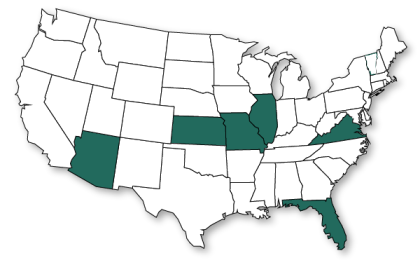A friend of the O’Connor Insurance Agency told the story of waking up to see a fire-engine parked in his street. Both concerned and curious, he ventured out to see the young family who live across the street standing on the porch with both firemen and men dressed in hardhats and reflective vests scurrying on and off their porch. The firemen and utility workers were responding to a carbon monoxide alarm.
Carbon monoxide (CO) is a colorless, odorless, tasteless gas. CO is a byproduct of combustion, and can be produced by anything that burns fuel from automobiles, charcoal grills, and gas appliances. CO becomes dangerous when it is able to accumulate, typically when combustion gases are not able to vent properly.
Carbon monoxide poisons humans by displacing oxygen in the blood. Breathing in CO can lead to flu like symptoms, headaches and nausea, weakness, dizziness, shortness of breath, and unconsciousness. If a person falls unconscious in an environment with a dangerous concentration of carbon monoxide, they can die.
In her mother’s arms was their little girl, being very well behaved and taking in all the commotion. Mom and Dad were drinking brew from the local coffee shop. It was a cool morning, so our friend invited them to come into his house.
Our friend’s neighbor had wisely installed a carbon monoxide detector on all three floors of his home. They awoke early to the sound of the alarm. As the neighbor investigated, the second floor alarm sounded. As they quickly dressed and got outside to fresh air, the third floor alarm went off. Firemen tested the air in the home and found that the CO levels were indeed dangerous. Without the detectors, it is quite likely that this little family would have lost their lives. Thanks to their foresight, all is well.
In this case, the high CO levels were caused by a furnace in need of servicing. A dirty furnace can interfere with how exhaust gasses vent and can shortly flood a dwelling with poisonous gas.
As cold weather draws near, we encourage all our friends to have their furnaces professionally inspected and cleaned, and to make sure their fire and carbon monoxide detectors are in good working order. Most of us know that when we change our clocks we should change our smoke alarm and carbon monoxide detector batteries, but in addition experts recommend you replace detectors after 5 to 7 years. Most municipal fire departments can provide and even install these life-saving devices at no additional cost to the homeowner.


 To shovel, or not to shovel, that is the liability question. How quickly do you have to shovel the snow from your sidewalk after a snowfall. What are the consequences if you do not?
To shovel, or not to shovel, that is the liability question. How quickly do you have to shovel the snow from your sidewalk after a snowfall. What are the consequences if you do not? One of our clients recently was involved in a car accident that totaled the car and involved the police, fire department and a trip to the hospital. Fortunately, everyone is going to recover. He put together this thoughtful review of things to remember before an accident, and afterward. This is the first part of two.
One of our clients recently was involved in a car accident that totaled the car and involved the police, fire department and a trip to the hospital. Fortunately, everyone is going to recover. He put together this thoughtful review of things to remember before an accident, and afterward. This is the first part of two. One of our colleagues recently was involved in a car accident that totaled the car and involved the police, fire department and a trip to the hospital. Fortunately, everyone is going to recover. He put together this thoughtful review of things to remember before an accident, and afterward. This is the second part of two.
One of our colleagues recently was involved in a car accident that totaled the car and involved the police, fire department and a trip to the hospital. Fortunately, everyone is going to recover. He put together this thoughtful review of things to remember before an accident, and afterward. This is the second part of two.


